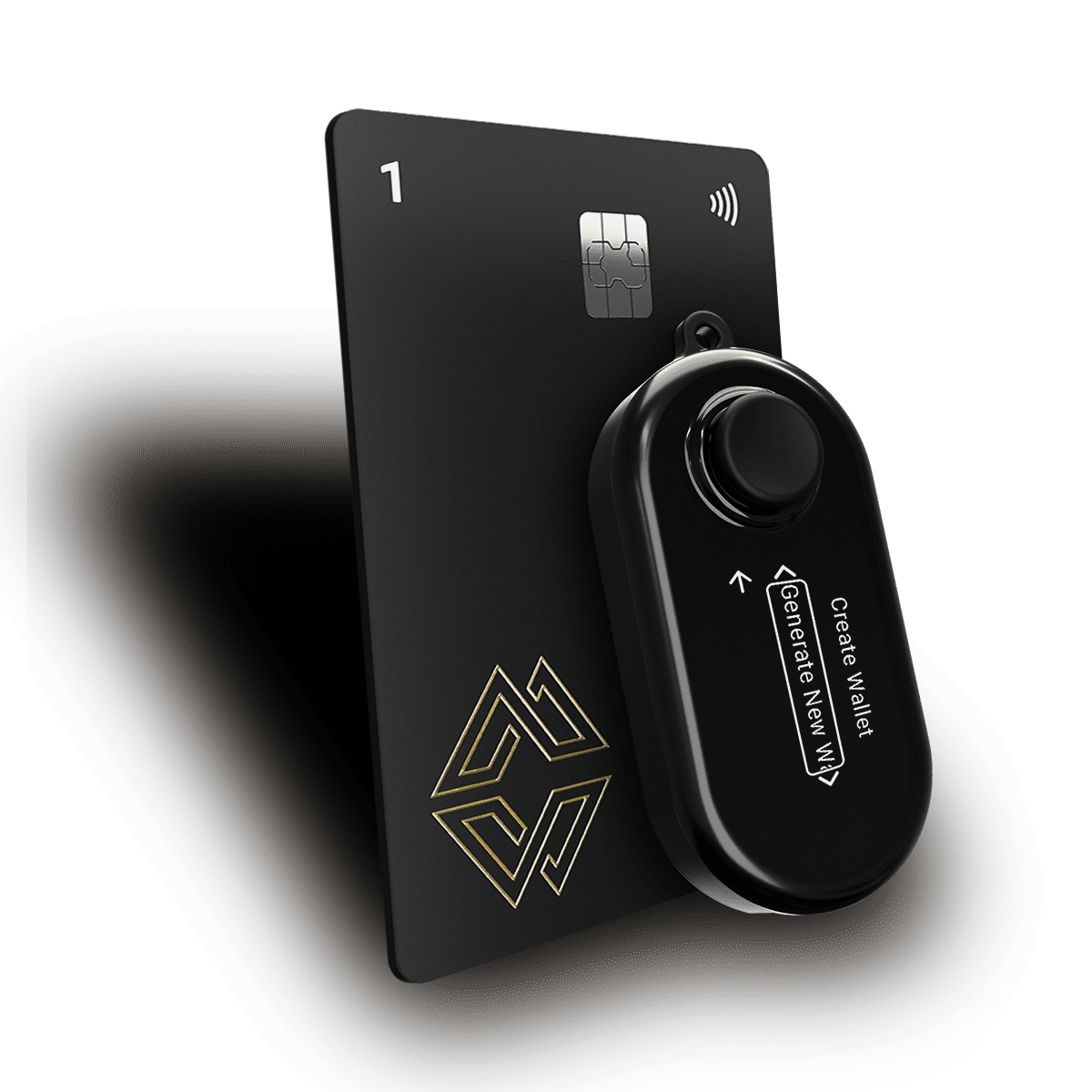
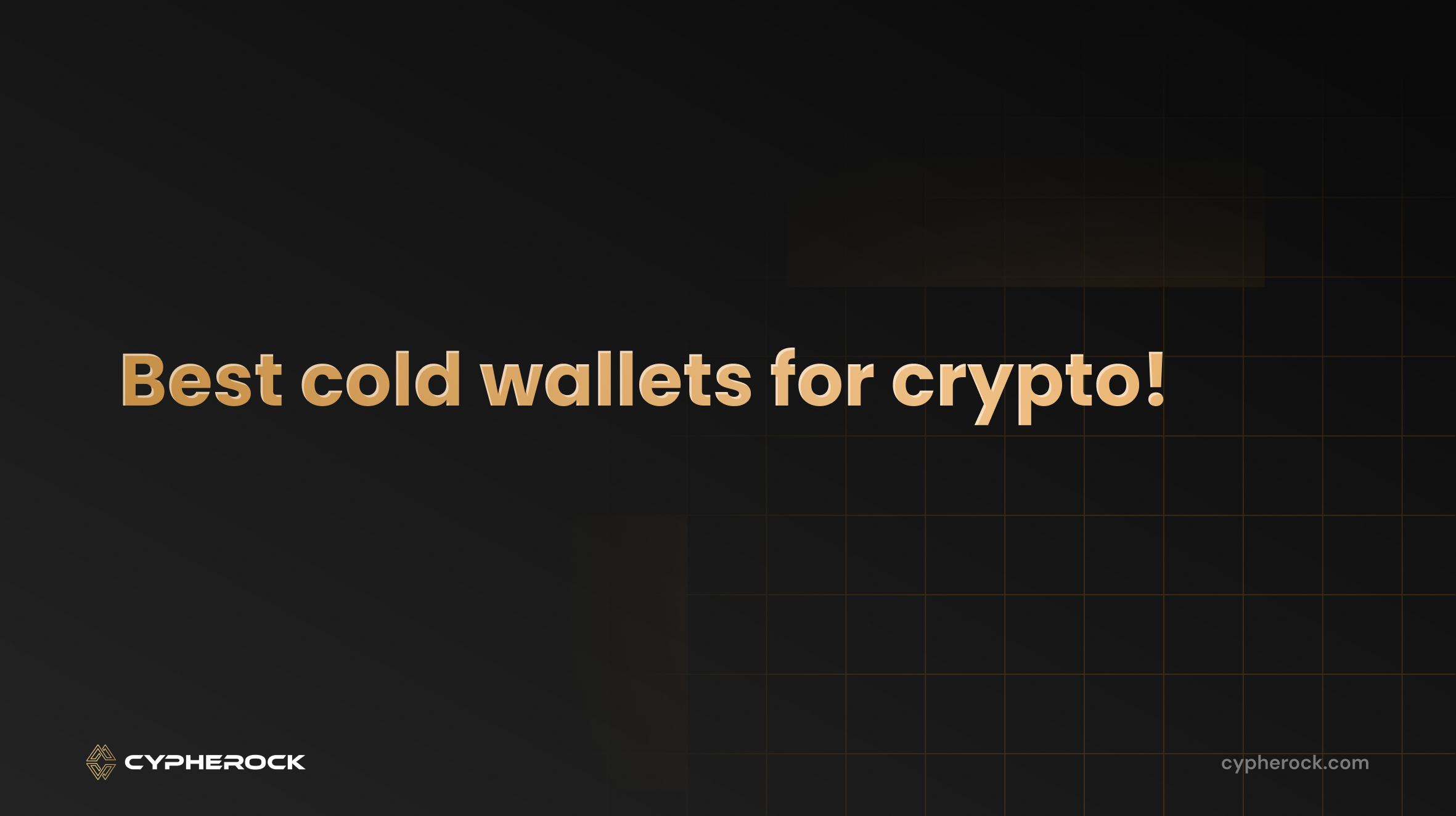
Keeping your crypto safe is super important. If someone steals your private keys, they can take your coins forever. That’s why many people use cold wallets to protect their digital money. Cold wallets store your crypto offline, away from hackers and online threats.
In 2025, cold wallets have become smarter and easier to use. You’ll find devices that offer strong security and support lots of different cryptocurrencies. Whether you’re just starting out or already own crypto, choosing the right cold wallet can make a big difference in keeping your assets secure.
Curious about what makes a cold wallet the best choice for you? Let’s start by understanding what a cold wallet really is and why it matters.
A cold wallet is a way to store your cryptocurrency completely offline. This means your private key, the secret codes that let you access your crypto, are kept away from the internet. Because they’re offline, cold wallets are much harder for hackers to reach.
Think of a cold wallet like a safe in your house. You keep your valuables inside, and only you have the key. Since it’s not connected to the internet, no one can break in through online tricks.
You might have heard of hot wallets too. These are wallets connected to the internet, like mobile apps or web wallets. Hot wallets are easy to access and convenient for daily use. But this convenience comes with a risk. Because they’re online, hackers can try to steal your crypto if the wallet is not well protected.
Cold wallets, on the other hand, are offline and don’t have this risk. Since your private keys never touch the internet, there’s almost no chance for online attacks.
Using a cold wallet gives you peace of mind about your crypto security. Here are some key benefits:
With all these benefits, it’s clear why cold wallets are the go-to choice for serious crypto holders who want maximum security.
When it comes to cold wallets, there are mainly two types you’ll hear about: hardware wallets and paper wallets. Both keep your crypto offline, but they work in very different ways. Let’s look at each one so you can decide which fits your needs best.
Hardware wallets are small physical devices designed specifically to keep your crypto keys safe. Imagine a tiny, secure USB stick that holds your secret codes. When you want to send or receive crypto, you connect the hardware wallet to your computer or phone. The device signs the transaction internally without ever exposing your private keys online.
Because they are built with security in mind, hardware wallets protect your crypto from hackers, viruses, and malware. Many models also have extra features like PIN codes, screens to verify transactions, and backup options.
Hardware wallets are perfect if you want a strong balance between security and ease of use. They’re great for long-term storage, but also let you manage your crypto when you need to.
Paper wallets are one of the simplest forms of cold storage. A paper wallet is literally a piece of paper with your public and private keys printed on it, often with QR codes. You generate a paper wallet using special software, then print it out and keep it somewhere safe.
Because paper wallets are completely offline, they are immune to online hacking. But they come with their own risks. Paper can be easily damaged, lost, or destroyed by water, fire, or wear and tear. Also, if you make a mistake while creating or handling the wallet, your crypto could be at risk.
Picking the right cold wallet means thinking about a few important factors. You want a wallet that keeps your crypto safe, is easy to use, and works with the coins you own. Let’s explore these factors so you can make a smart choice.
Security should be your top priority when choosing a cold wallet. After all, you’re protecting valuable digital assets. Look for wallets that have strong protection measures like:
By focusing on these features, you’ll reduce the risk of theft or loss.
A cold wallet can be super secure, but if it’s too hard to use, you might make mistakes. User-friendliness matters because it helps you manage your crypto confidently. Look for:
A user-friendly wallet keeps things safe by making sure you understand every step.
Not all wallets support every cryptocurrency out there. You want to make sure your cold wallet works with the tokens you own or plan to buy. Things to check:
Choosing a wallet that supports your crypto means you won’t need multiple devices and can manage everything in one place.
In 2025, the cold wallet market offers many great options. Each wallet has its own strengths, so you can find one that fits your security needs, ease of use, and the coins you own. Here are some of the best cold wallets you should consider.
Cypherock X1 reimagines hardware wallet security with its revolutionary decentralized architecture that eliminates the fundamental vulnerabilities in traditional hardware wallets. Using advanced Shamir's Secret Sharing cryptography, it splits your private keys across five secure hardware components - X1 Vault and four X1 Cards with bank-grade EAL6+ secure elements - ensuring no single point of failure exists.
This distributed security model provides 360° protection against theft, loss, and physical attacks while completely eliminating the need for vulnerable seed phrase backups ( however, users can always view seed phrases on the X1 vault device by tapping any X1 Card and entering your PIN). Even if you lose up to three components, your crypto remains fully accessible.

Key Features:
Token Support:
Companion App:
The Cypherock X1 is great if you want top-tier security and It shines for users serious about crypto safety.
Ledger Nano X remains a favorite for many crypto users due to its balance of security and usability. It features Bluetooth connectivity, making it easy to manage your crypto on mobile devices.
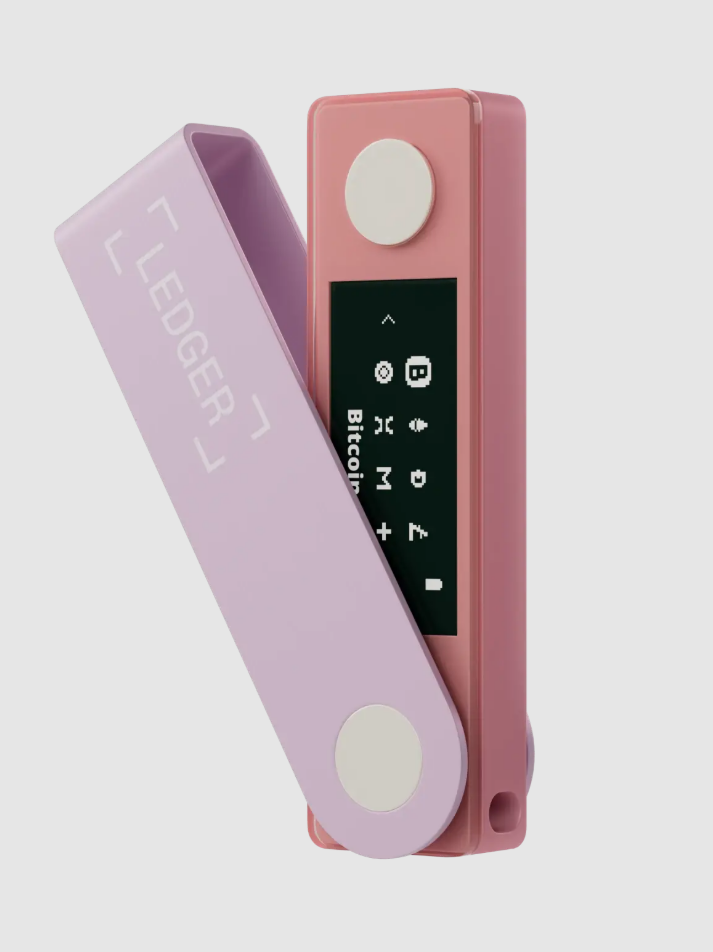
Key Features:
Token Support:
Companion App:
Ledger Nano X is ideal if you want strong security with convenience and broad crypto support.
Ledger Stax is designed for users who value sleek design along with security. It features a large touchscreen and a unique curved E Ink® edge for a modern look.
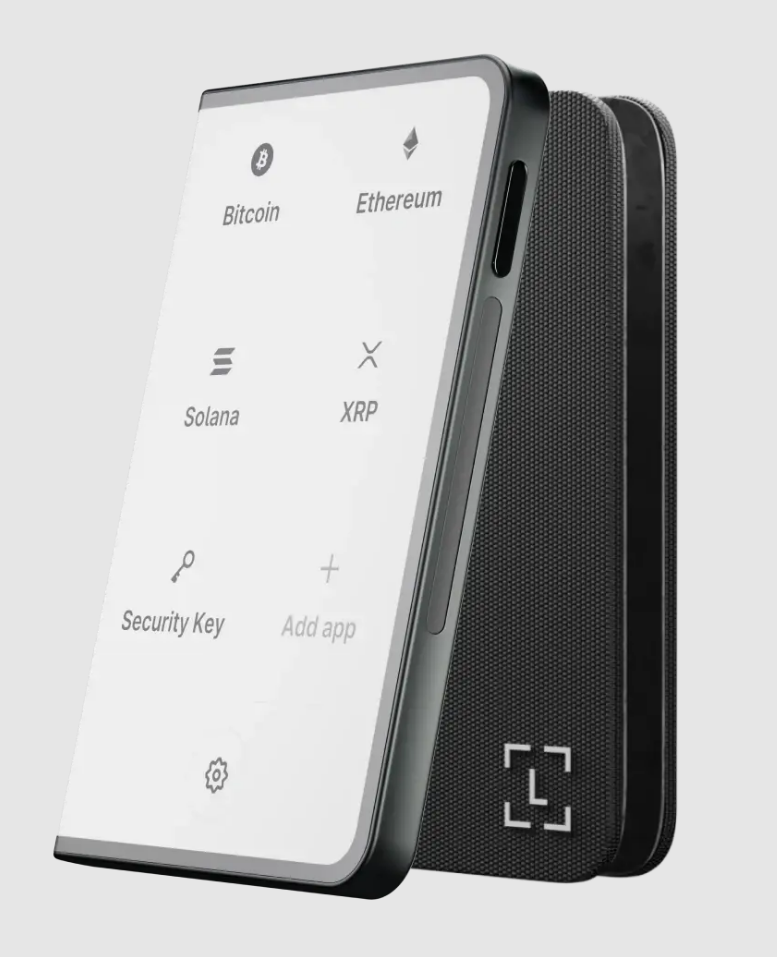
Key Features:
Token Support:
Companion App:
Ledger Stax fits users who want a premium feel and advanced features, though it comes at a higher price.
The Trezor Safe 3 offers excellent security at a wallet-friendly price. It has an EAL6+ certified Secure Element chip and open-source firmware, which adds transparency.
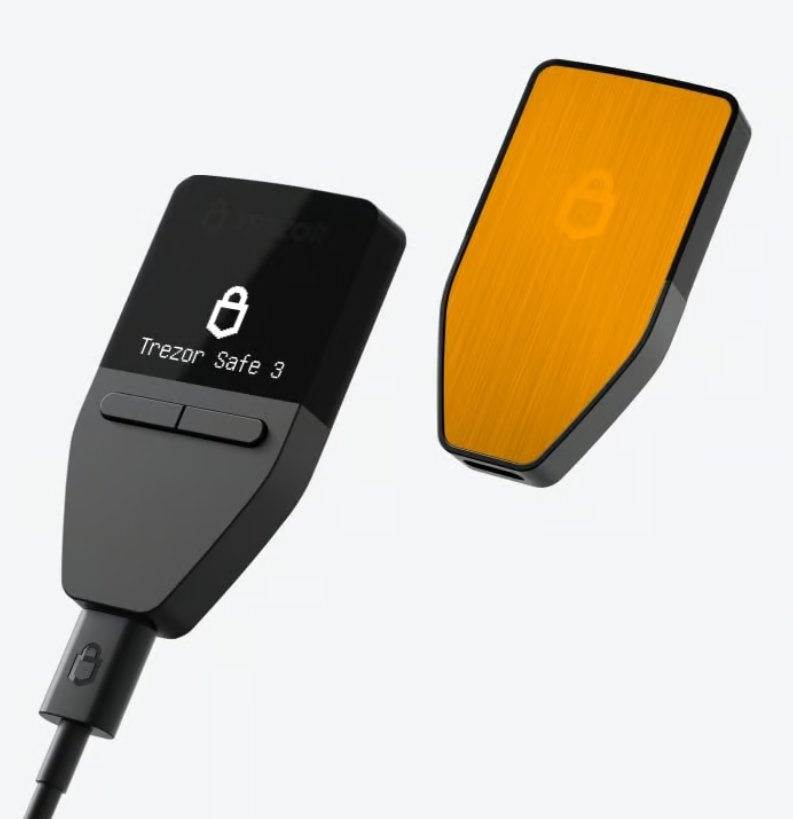
Key Features:
Token Support:
Companion App:
Trezor Safe 3 is perfect if you want strong security without a high price tag and appreciate open-source transparency.
COLDCARD is built specifically for Bitcoin security. It is an air-gapped wallet, meaning it never connects directly to the internet, reducing hacking risks.

Key Features:
Token Support:
Companion App:
COLDCARD is ideal if you want maximum Bitcoin security and don’t need support for other cryptocurrencies.
When it comes to cold wallets, many people have questions and sometimes misunderstand how they work. Let’s clear up some common myths and facts so you know the truth about cold wallet security and usability.
Myth: Cold wallets are completely hacker-proof.
Fact: While cold wallets offer strong protection because they stay offline, no device is 100% foolproof. Physical theft, user mistakes, or damage to the device can still cause loss. But compared to hot wallets, cold wallets greatly reduce hacking risks.
Myth: All cold wallets have the same level of security.
Fact: Security varies a lot between different cold wallets. Some use Secure Element chips, open-source software, or multi-factor protection. Others might lack these features. It’s important to choose a wallet with proven security measures.
Myth: You don’t need to back up a cold wallet because it’s so secure.
Fact: Backups are still essential. If you lose your device or the key parts, and don’t have a backup, your crypto is gone forever. Good cold wallets provide easy, secure ways to create backups.
Myth: Cold wallets are too complicated for regular users.
Fact: Many modern cold wallets focus on user-friendly designs and apps. While some advanced models require a learning curve, others, like Cypherock, Ledger and Trezor, offer simple setups that beginners can handle with ease.
Myth: You can’t use cold wallets for everyday transactions.
Fact: Cold wallets are mainly for secure storage, but you can still send and receive crypto. You usually connect the wallet to your computer or phone only when you need to move funds, keeping keys offline most of the time.
Myth: Cold wallets are bulky and inconvenient.
Fact: Hardware wallets are now very compact, small enough to fit in your pocket or a safe. Paper wallets are lightweight too, though less practical for frequent use.
Using a cold wallet is one of the safest ways to protect your crypto. But you need to set it up right and take good care of it to keep your funds secure. Here are some easy tips to help you use your cold wallet safely.
By following these steps, you reduce risks and keep your crypto assets safe for the long term.
Keeping your crypto safe starts with choosing the right cold wallet. These wallets protect your private keys by keeping them offline, away from hackers and online threats. In 2025, you have many great options like Cypherock X1, Ledger Nano X, Trezor Safe 3, and COLDCARD, each with unique features to fit your needs.
When picking a cold wallet, remember to focus on security, ease of use, and support for your favorite cryptocurrencies. Don’t forget to follow safe setup and maintenance steps to protect your funds.
Your crypto is valuable, and using a trusted cold wallet is one of the smartest ways to keep it safe for years to come. Ready to protect your digital assets? Choose your cold wallet carefully and enjoy peace of mind.
A cold wallet stores your crypto private keys offline, keeping them safe from online hackers. It’s important because it offers stronger security than online wallets.
Look for strong security (Secure Element chips, PINs), ease of use, wide cryptocurrency support, backup options, and reliable companion apps.
Cold wallets are offline, offering higher security but less convenience. Hot wallets connect to the internet, making them easy to use but more vulnerable to hacking.
Not always. Hardware wallets are physical devices often used as cold wallets, but some cold wallets can be paper or other offline methods.
Yes, many cold wallets like Cypherock support thousands of different cryptocurrencies in one device.
They can be less convenient for frequent transactions, may have a learning curve, and sometimes losing the backup can mean losing access to your crypto forever if you are not using a next-gen hardware wallets like Cypherock.

Start securing your crypto journey today—visit Cypherock X1 to learn more.
Connect with us:
Twitter: @CypherockWalletTelegram: Join the Community
